Manufacturer: Sapphire
UK price (as reviewed): £424.99 (inc. VAT)
US price (as reviewed): MSRP $409 (exc. tax)
The baseline performance offered by the two Navi reference cards, the RX 5700 XT and RX 5700, was largely responsible for shaking up the high-end GPU market and bringing better value to consumers. Sadly, though, the cooler design meant we couldn’t really recommend them on account of their thermal performance and noise output, and this has meant that most GPU reviews since then have featured a phrase akin to ‘wait for custom Navi designs’. After all, any partner that could improve the cooling without ruining the value proposition would largely be onto a winner.
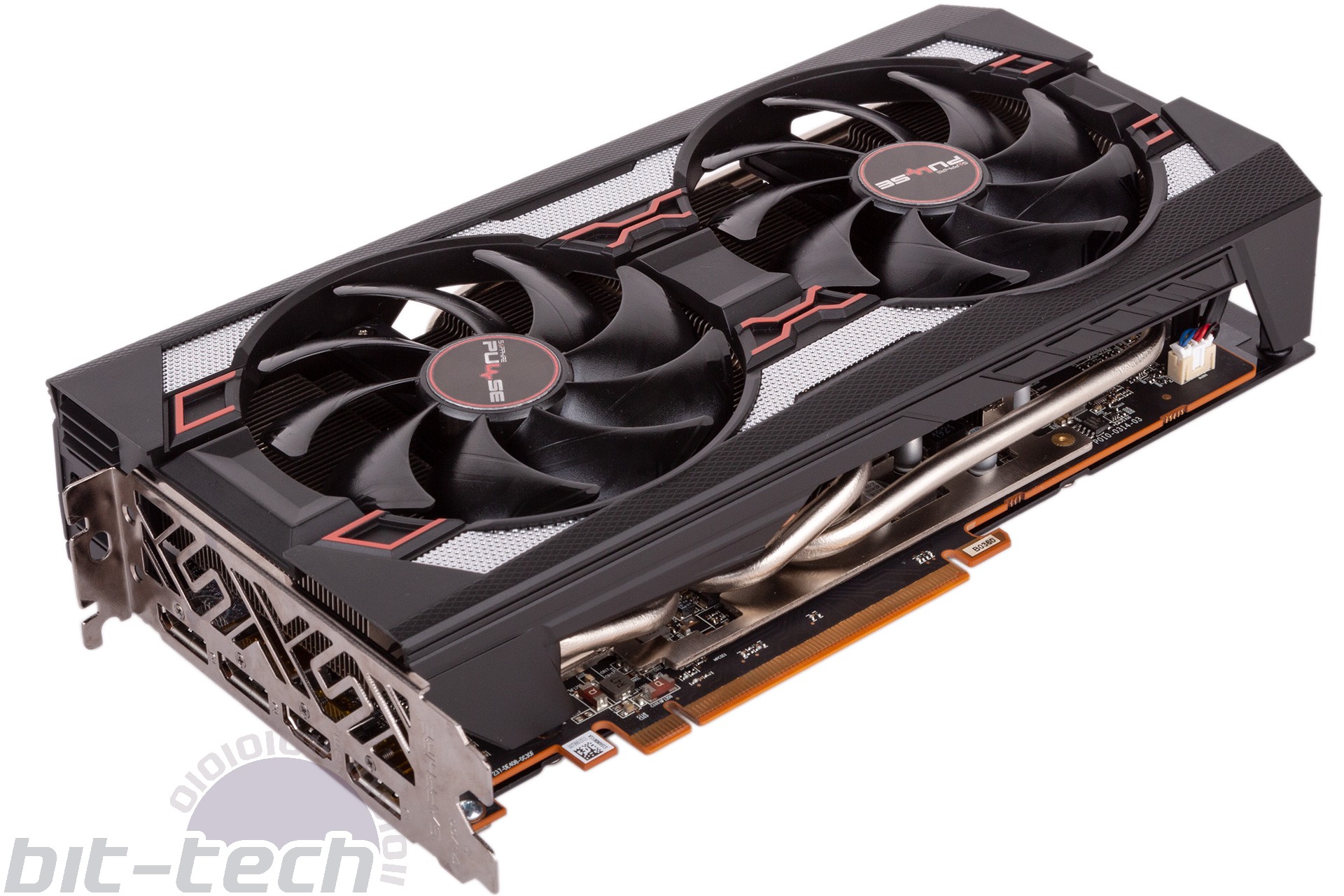
Today, that wait is finally over, as Sapphire is launching its Pulse variant of both cards using a new PCB and a custom cooler. Reviews for an Asus custom design also seem to have gone live, and we’re expecting to bring you coverage of other custom Navi designs very soon. We had hoped to bring you a review of both Pulse cards, but some testing gremlins put halt to those plans, so we’re focussing instead on the £425 RX 5700 XT Pulse for now and will get to the RX 5700 Pulse later.
| Name | AMD Radeon RX 5700 XT | Sapphire RX 5700 XT Pulse |
|---|---|---|
| Base Clock | 1,605MHz | 1,670MHz (+4%) |
| Game Clock | 1,755MHz | 1,815MHz (+3.5%) |
| Boost Clock | 1,905MHz | 1,920MHz (+1%) |
| Dual BIOS | No | Yes |
| Memory Data Rate | 14Gbps | 14Gbps (+0%) |
| Total Board Power | 225W | 241W |
| Power Connectors | 1x 8-pin, 1x 6-pin | 1x 8-pin, 1x 6-pin |
| Display Connectors | 3x DP, 1x HDMI | 3x DP, 1x HDMI |
| Length | 270mm | 258mm |
| Height | 110mm | 135mm |
| Slots | 2 | 3 |
| Power Phases | 7+1+2 | 7+1+2 |
| LEDs | Yes, red | Yes, red |
| Zero RPM Mode | No | Yes |
| Warranty | 2 years min. | 2 years |
Remember, the three new clocks AMD lists are not actually programmed into VBIOS; they are positions along the voltage/frequency curve that are the expected minimum levels in certain applications or scenarios. The most important is the Game Clock, with Sapphire reckoning that its card will boost about 3.5 percent higher on average than a reference model in games. Exact differences will vary from card to card, but this should be enough of an overclock to keep the Pulse card running faster, even if only by a little bit.
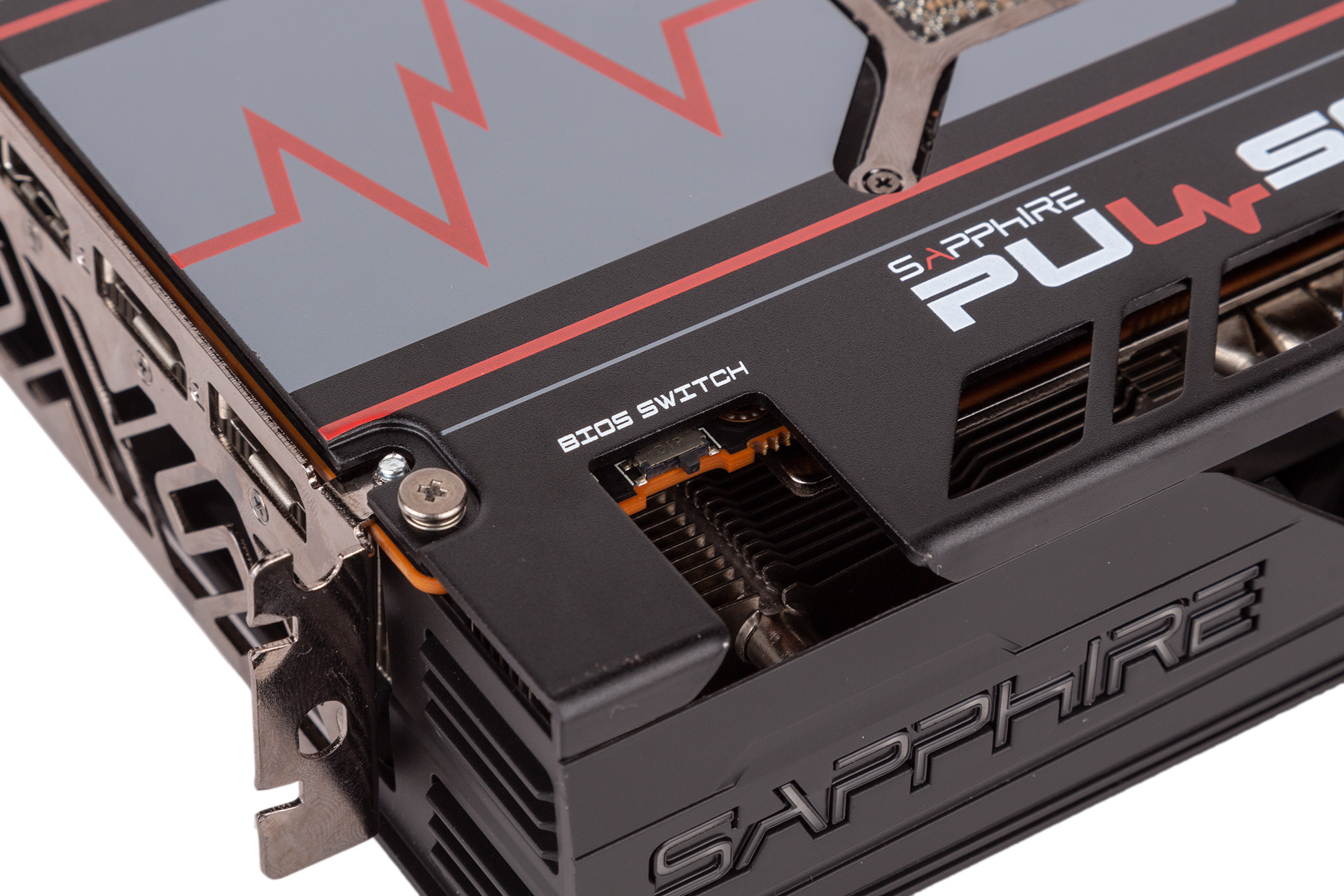
Sapphire does also have a dual BIOS switch, something the reference card lacked. Flicking this to the position nearest the I/O panel activates Silent Mode, where clocks are dropped to reference level and the fan curve is less aggressive. Note that, unfortunately, neither BIOS has a memory overclock.
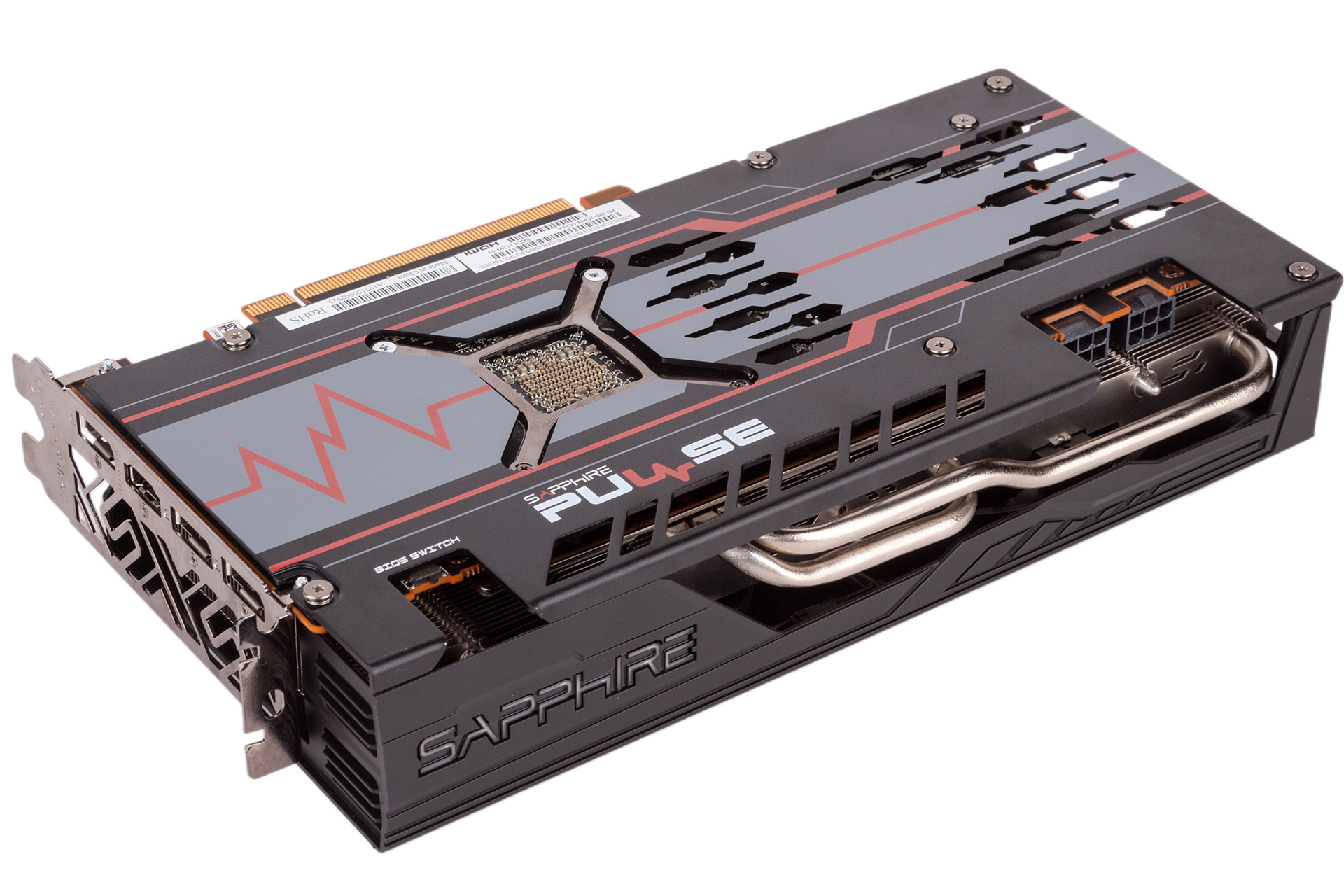
Although the custom PCB is on the small side and shorter than reference, the oversized cooler brings the height up to a hefty 135mm, which not all cases will be able to cope with. The ~260mm length won’t be difficult to contend with, but the RX 5700 XT Pulse also breaks through dual-slot dimensions, so do take that into consideration too – it’s particularly relevant to small form factor users and those who might like to install the GPU vertically.
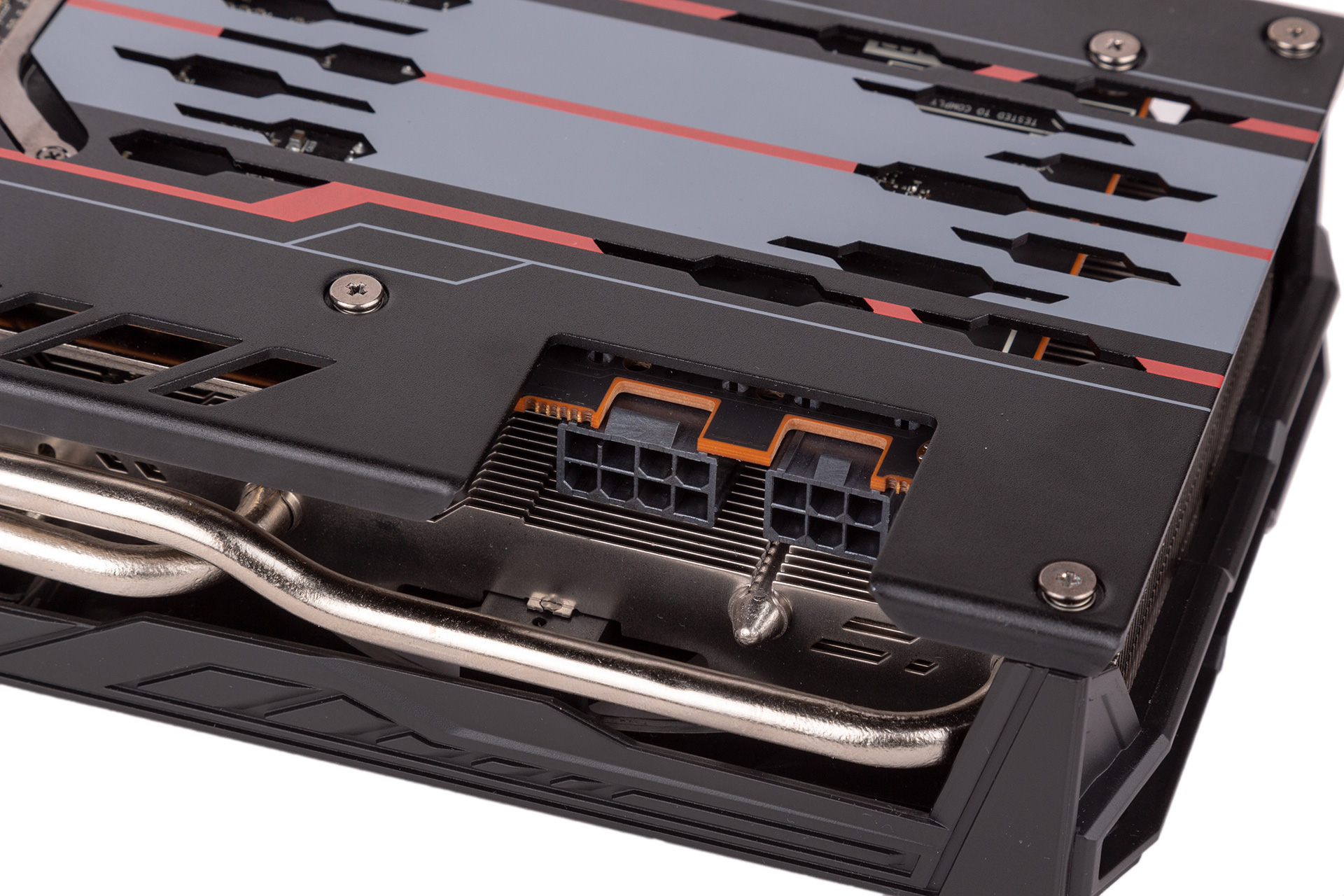
The Total Board Power rating of 241W will help keep the boosting higher too and is 16W higher than reference. That said, Sapphire sticks to using a six-pin/eight-pin PCIe plug combo to feed the card its juice. This means there is up to 300W of power technically available once the PCIe slot is factored in. Thankfully, these plugs are indented deep into the shroud, so users needn’t worry about their cables jutting out and adding even more height.
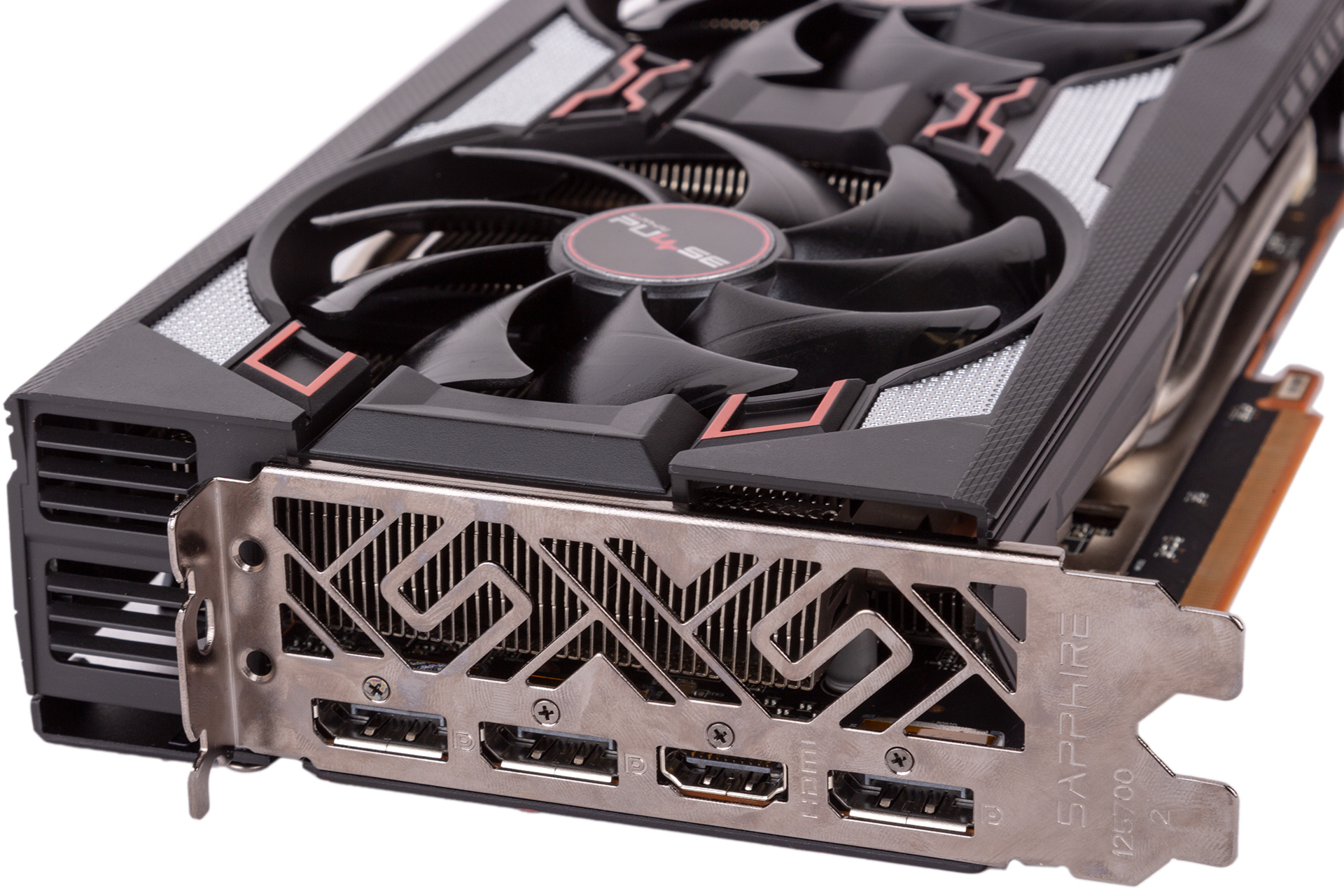
The rear I/O has the regular setup of three DisplayPort 1.4 headers and a solitary HDMI 2.0b port. FreeSync 2 HDR is of course supported. AMD does not support the forward-looking USB-C VirtualLink standard on its current Navi cards, so if this appeals to you you’ll need to go with Nvidia.
The card’s build quality is mostly pretty good. The shroud is made from plastic, but it’s anchored into the perforated aluminium backplate and doesn’t feel loose or flimsy. RGB lighting isn’t found here, with Sapphire instead choosing to illuminate its logo with red LEDs that cannot be controlled or disabled in software. That said, you can disassemble the card easily to the point where the cable for the LED can be disconnected. Elsewhere the card has some painted red highlights but is mostly a black and grey affair.
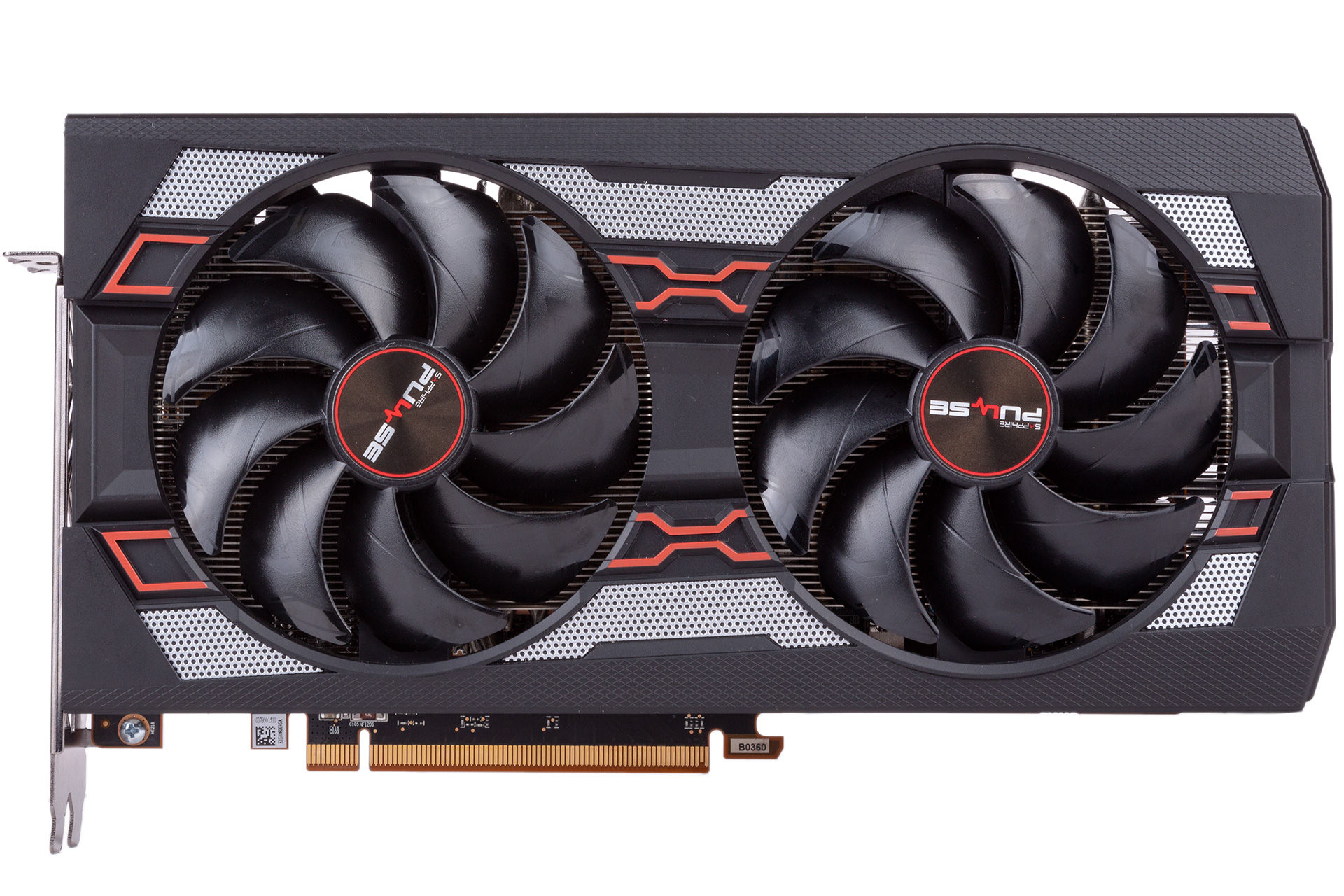
The card’s substantial height means Sapphire is able to use two 95mm fans for cooling. These feature a nifty quick-disconnect system that allows you to remove each one via a single screw – very handy if they ever need cleaning or replacing. They also feature a dual ball bearing motor, with Sapphire claiming to have reduced their noise output by 10 percent compared to its previous-generation design.
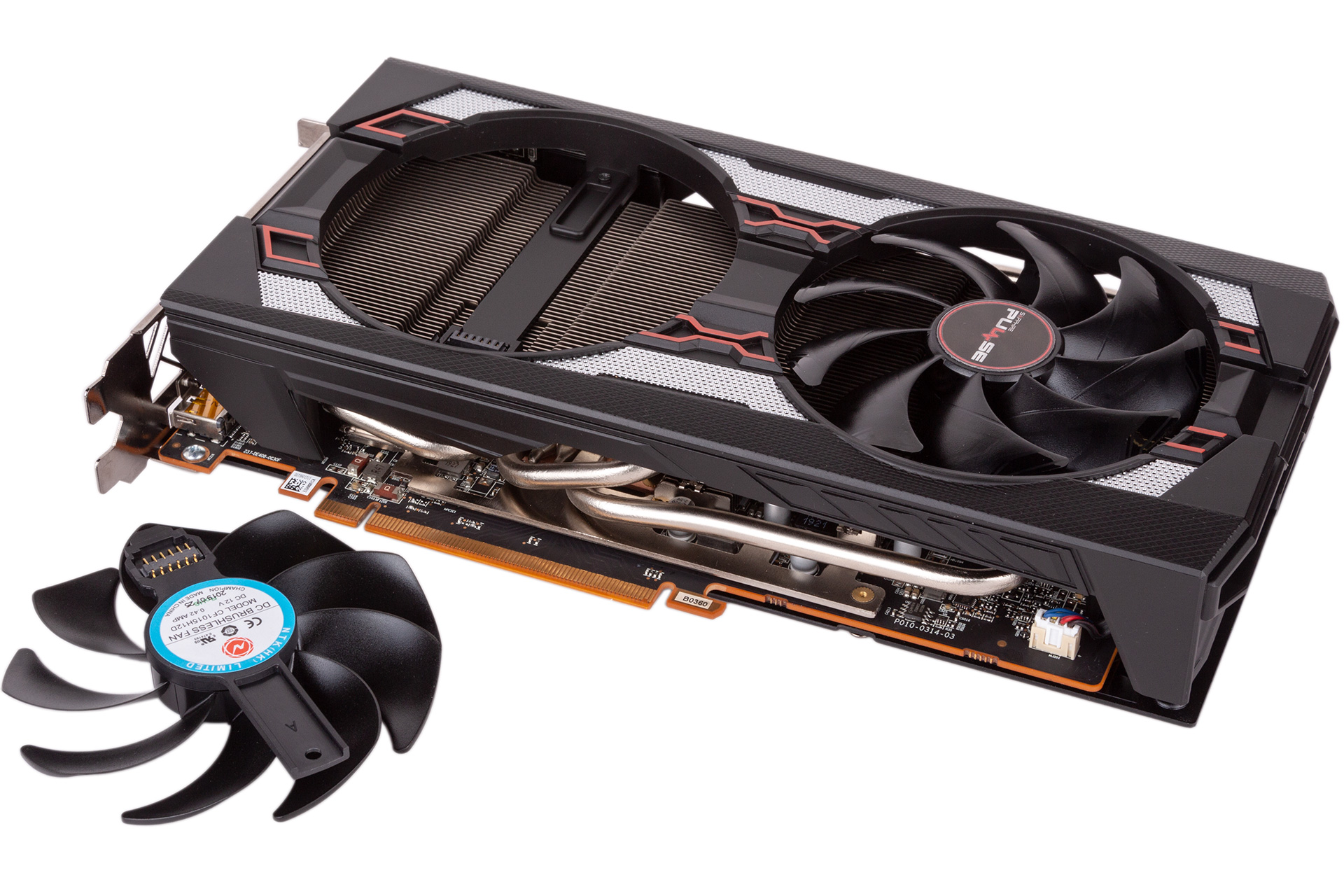
With the shroud removed, we get a closer look at the cooler. It’s interesting that much of the volume is filled by exposed heat pipes rather than aluminium fins, but we do like that the pipes are nickel-plated, as exposed copper is hard to integrate neatly into builds. The fins are arranged so as to direct some airflow through the rear I/O panel, but the open shroud means plenty will be recycled in your case too. The five heat pipes are fed by a large copper contact plate, with thermal paste used as the heat transfer.
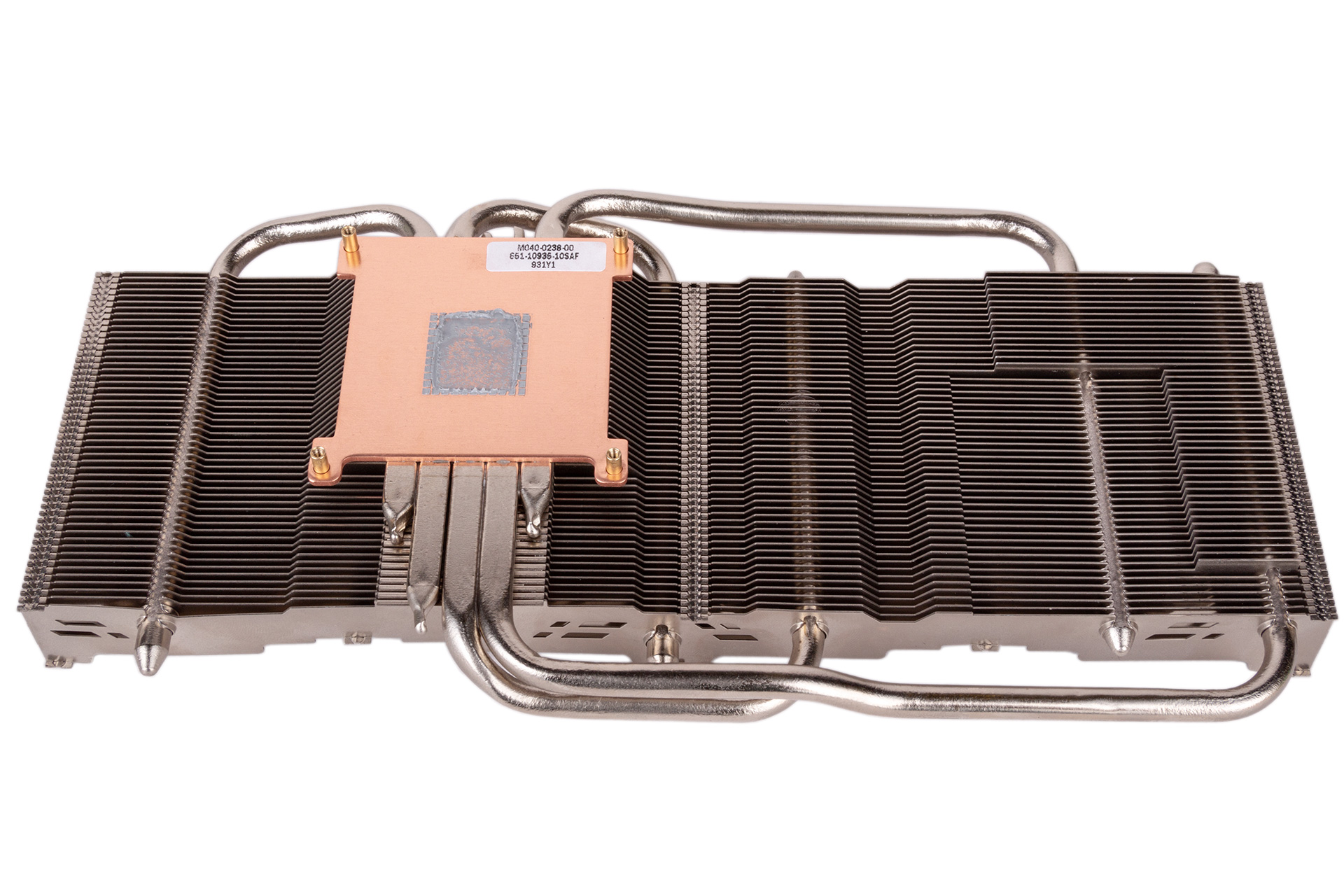
A secondary, smaller heatsink is used to directly cool all eight GDDR6 memory chips and the MOSFETs of the various power phases via thermal pads, though chokes and capacitors are left exposed. The backplate also has some pads to help cool the rear of some VRM components.
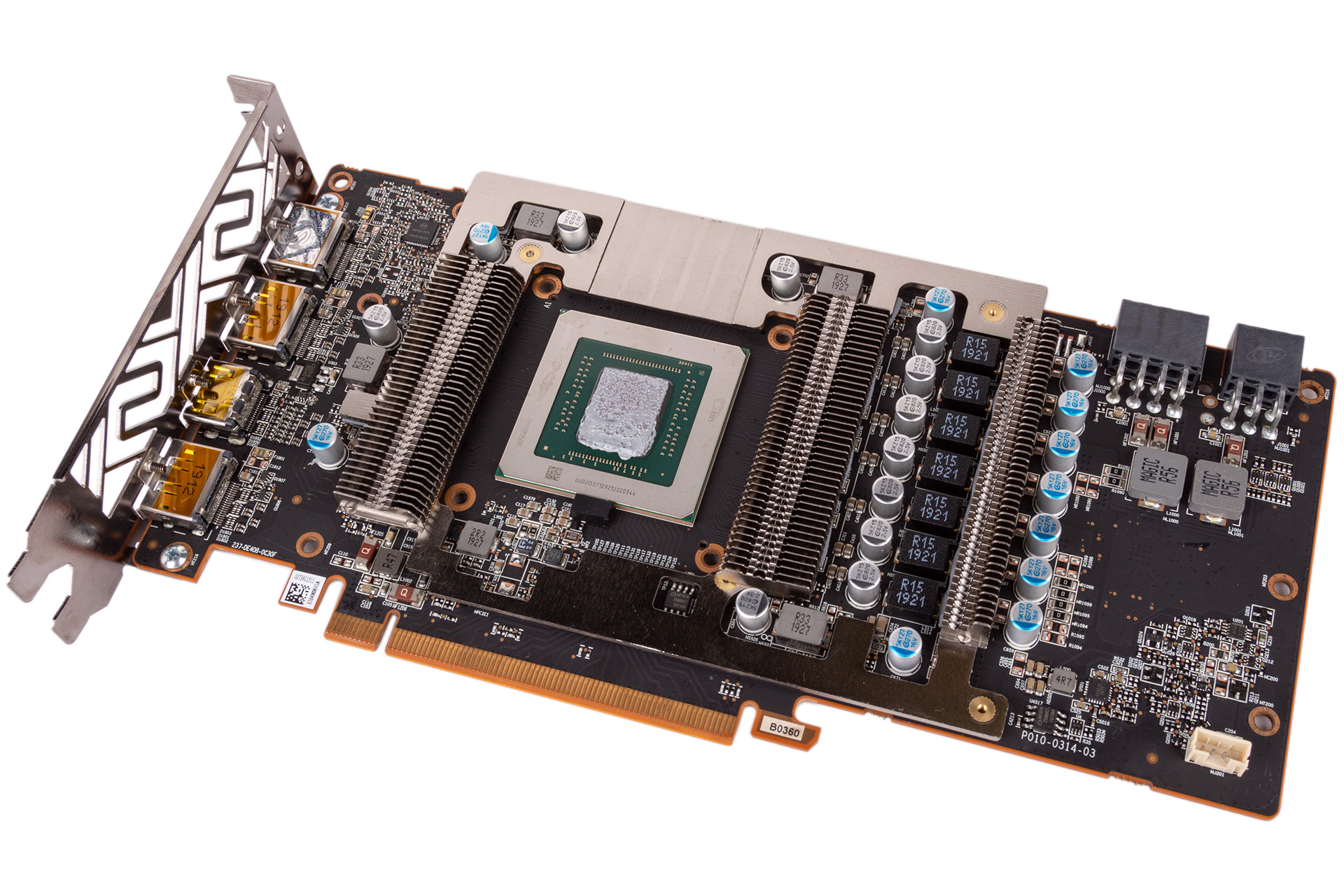
The GPU is served by 7+1 phases, with the +1 here referring to a secondary voltage for the ASIC itself, and the memory is allocated two power phases. There’s also a single phase that serves the memory bus. This is the same setup as the reference card, but the PCB design is a custom one. Features that Sapphire lists for its card are a 12-layer PCB, long-life capacitors, and fuse protection built into the circuit of the external PCIe power connectors.
The card is supported by Sapphire’s newest version of the TriXX overclocking software (as well as AMD WattMan, of course), which also taps into the Radeon Image Sharpening feature in what Sapphire calls TriXX Boost. It works by rendering the game at a lower resolution and upscaling it to the output resolution with a post-process sharpening filter applied when RIS is enabled. You can achieve the same thing in AMD’s drivers, but the feature is outside the scope of this review and not tested.
The warranty on the card is only two years; we prefer seeing a three-year figure when it comes to custom cards.

MSI MPG Velox 100R Chassis Review
October 14 2021 | 15:04

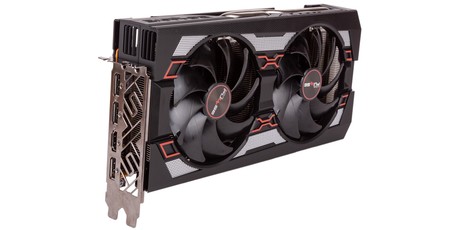
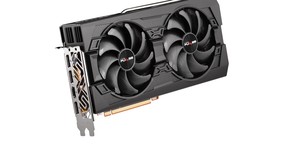
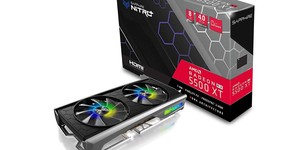
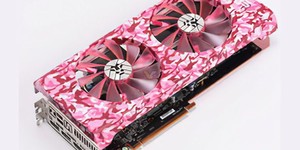




Want to comment? Please log in.